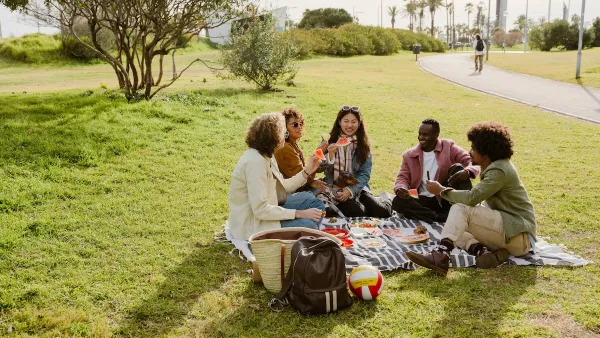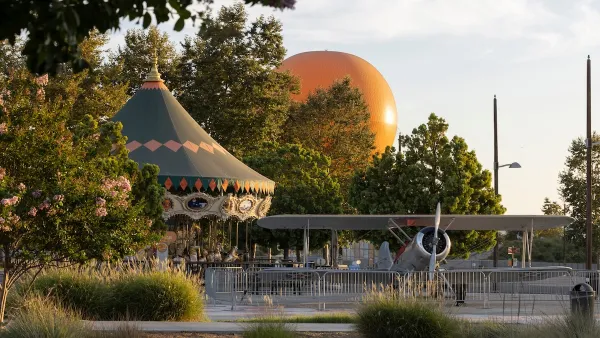July is Park and Recreation Month and this year’s theme is “We Rise Up for Parks and Recreation.” One way for park and recreation professionals to rise up is for them tell their stories.

Parks are sometimes dismissed as “nice-to-haves” or as being just about “fun and games.” But parks are essential infrastructure that provide a wide range of benefits to communities. Specifically, parks offer a variety of environmental, social, and economic benefits both within and beyond park boundaries, as summarized below:
Environmental
- Improve air quality
- Capture and clean stormwater
- Mitigate heat and stabilize temperature
Social
- Improve public health
- Improve community safety
- Enhance community cohesion
- Improve walkability
- Reduce stress and improve academic performance
Economic
- Increase property values
- Create temporary and permanent jobs
In this article, park planner Clement Lau encourages fellow park and recreation professionals to tell their personal and professional stories to:
- Make the case for parks and recreation
- Counter false narratives
- Encourage and inspire each other
- Reflect and learn
While Lau's preferred method of sharing his stories is through articles and blog posts, he notes that narratives in support of parks and recreation may also be told via posts on social media outlets like Facebook, Instagram, LinkedIn and Twitter, media interviews, press releases, and official publications like annual reports, fact sheets, and other materials that can be shared with the public and decision-makers.
FULL STORY: We Rise Up by Telling Our Stories

Planetizen Federal Action Tracker
A weekly monitor of how Trump’s orders and actions are impacting planners and planning in America.

Restaurant Patios Were a Pandemic Win — Why Were They so Hard to Keep?
Social distancing requirements and changes in travel patterns prompted cities to pilot new uses for street and sidewalk space. Then it got complicated.

Map: Where Senate Republicans Want to Sell Your Public Lands
For public land advocates, the Senate Republicans’ proposal to sell millions of acres of public land in the West is “the biggest fight of their careers.”

Maui's Vacation Rental Debate Turns Ugly
Verbal attacks, misinformation campaigns and fistfights plague a high-stakes debate to convert thousands of vacation rentals into long-term housing.

San Francisco Suspends Traffic Calming Amidst Record Deaths
Citing “a challenging fiscal landscape,” the city will cease the program on the heels of 42 traffic deaths, including 24 pedestrians.

California Homeless Arrests, Citations Spike After Ruling
An investigation reveals that anti-homeless actions increased up to 500% after Grants Pass v. Johnson — even in cities claiming no policy change.
Urban Design for Planners 1: Software Tools
This six-course series explores essential urban design concepts using open source software and equips planners with the tools they need to participate fully in the urban design process.
Planning for Universal Design
Learn the tools for implementing Universal Design in planning regulations.
Heyer Gruel & Associates PA
JM Goldson LLC
Custer County Colorado
City of Camden Redevelopment Agency
City of Astoria
Transportation Research & Education Center (TREC) at Portland State University
Camden Redevelopment Agency
City of Claremont
Municipality of Princeton (NJ)





























